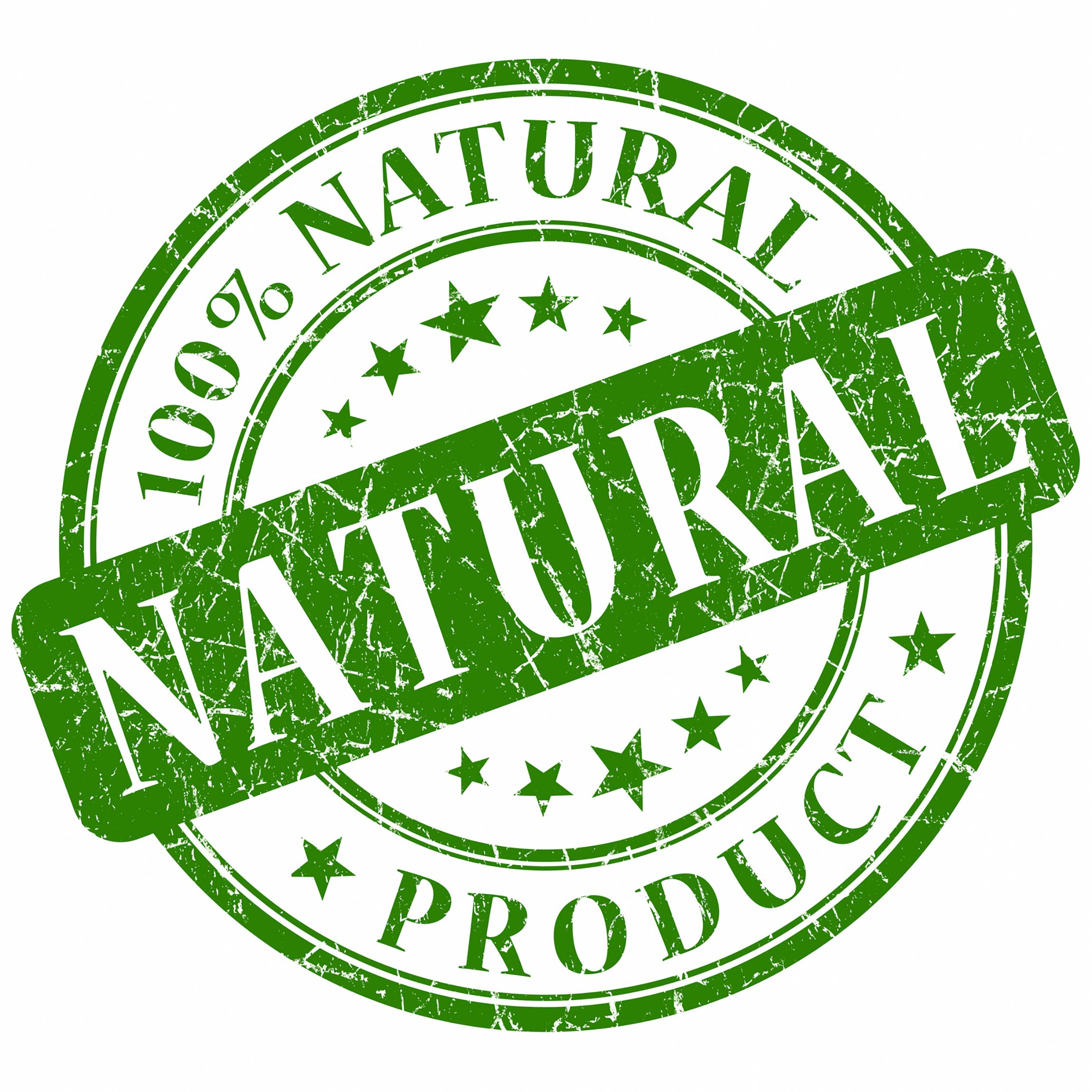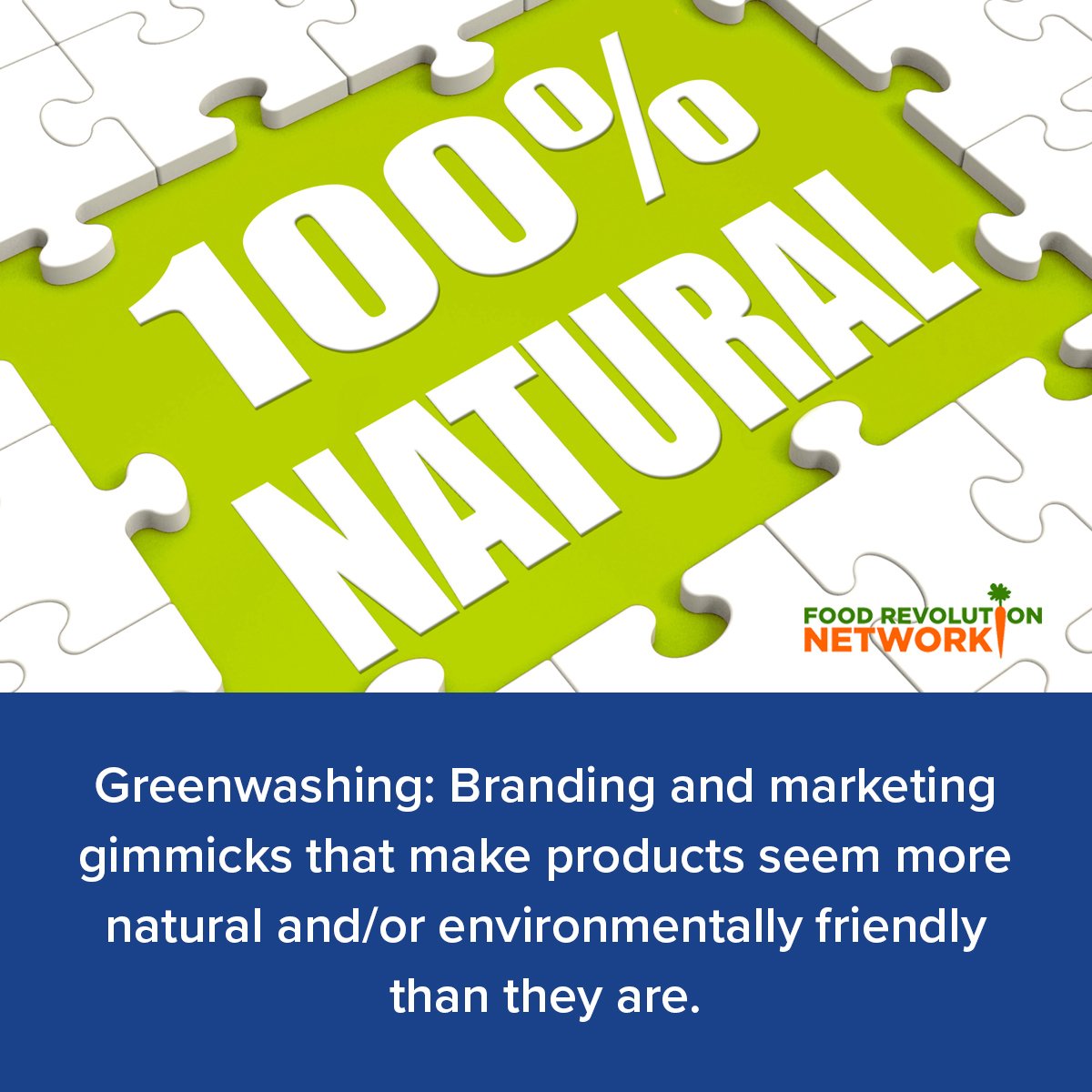Greenwashing is a widespread practice used by companies of all sizes to mislead consumers. Find out what greenwashing is — and how to identify greenwashed products — and choose ones that are actually healthy and eco-friendly.
By Jessica Welch • A version of this article was originally published by Annmarie
Greenwashing is the food and beauty industries’ form of brainwashing.
Companies of all sizes use greenwashing to trick consumers through creative branding into believing they are choosing healthier and more eco-friendly options.
By using specific phrases, like “all-natural” or “sustainably produced,” and visuals associated with health and nature, companies give the impression they are more environmentally friendly and healthier than they truly are.
Does This Sound Familiar?
It can be as simple as designing a bag of potato chips with a farm scene to imply freshness. Or it can be more convoluted.
Frito-Lay chip company tried to play into the health kick of the last decade, but because their product is inherently unhealthy, they resorted to greenwashing.
If you compare the Natural Lay’s Potato Chips to the Classic Lays Potato Chips, the “natural” product gives the appearance of being healthier.
Don’t Let Earthy Packaging Fool You
Frito-Lay opted for earth tones on the environmentally-friendly looking packaging and emphasized “natural” on the label.
However, the only difference between the two, besides the thickness of the chip, is that the natural chips use a different type of oil and salt. There is no difference between the grams of fat and the number of calories.
Different types of oil and salt were enough for a complete rebranding that led consumers to believe they were making a healthier choice.
Is Greenwashing Allowed?
Unfortunately, yes. The worst part is everything the companies are doing is legal.
When it comes to what you’re buying, it’s up to you the consumer to stay informed and do the research.
How to Identify Greenwashing

When it comes to what you’re buying, it’s up to you the consumer to stay informed and do the research.
Nobody wants to have to do homework before going grocery shopping. But these steps will help you understand what to look for when it comes to greenwashing.
1. Bypass the Packaging and Read the Label
Don’t be fooled by pictures of fruit, farms or any other faux-branding. There are no regulations on the images a company can use on their packaging.
Even though you’re buying a bag of fried potatoes, the image on the packaging of fresh vegetables being pulled from the earth by a burly farmer can easily convince consumers they’re making a healthy choice.
2. Beware of Branding
Another deceitful trick of greenwashing is using earth tones to connote an all-natural vibe. Since the new era of consumers has shown a clear interest in health, brands have begun producing packaging with more greens, browns, and blues, and avoiding bright, flashy, and unnatural colors.
The only way to tell if food is truly healthy (whatever your definition of healthy may be) is to READ THE LABEL
Once again, the visual does not necessarily represent the food. The only way to tell if food is truly healthy (whatever your definition of healthy may be) is to READ THE LABEL.
3. Look for Proof of Green Practices
Look for proof that your products are healthy. Products that are actually healthier and more sustainable will flaunt their certifications, so it shouldn’t be hard to find.
Some trustworthy seals to look for on your products are:
- U.S. Department of Agriculture (USDA) organic certification: USDA certification is a reliable source due to their regulations and rules that govern how a product is made from growth to manufacturing.
- Green Seal: Green Seal is an eco-friendly nonprofit that develops standards for companies to comply with to be labeled environmentally friendly.
- Non-GMO Project Verified: The Non-GMO Project is not yet the official certification for identifying non-GMO products, but right now it’s the leading verification. Since genetically modified organisms are a newer concept, there is no official certification yet. The Non-GMO Project is a difficult seal to attain because it requires absolutely no GMO’s down to the cow, plants, and seeds.

Editor’s note: Learn the difference between the organic food label and the non-GMO food label here.
Why You Should Be Wary of the Tested Green Seal
A few years back, the U.S. Federal Trade Commision targeted Tested Green when they discovered companies were buying the Tested Green label for $200 to $500.
4. Stop Trusting the Slogans

A company cannot claim to be “all-natural” if it is blatantly adding chemicals to its products. But there are many ways for “all-natural” brands to side-step the loose vernacular. Since the FDA doesn’t regulate the term “all-natural,” there are no official rules or regulations around the slogan.
Often, companies will use ingredients with compounds derived from plants mixed with synthesized compounds. The only way to truly know if a product is all-natural is by checking the ingredients and researching anything you’re not familiar with.
5. Know What Being Green Really Means
Labels and certifications can refer to a number of different aspects of a product. There is a wide spectrum of practices that go into food production. Does “sustainably produced” mean a commitment to minimal packaging, farming practices, or efficient manufacturing?
The Takeaway? Do Your Research

It’s up to you as the consumer to do the research and to learn the values of the companies you support. Ask questions about the food you consume and don’t be fooled by greenwashing.
Watch This Humorous Short Video for a Look into How Companies Practice False Advertising
You might be surprised to learn how some companies use terms like “natural” to market their products. In this funny video, learn why “natural” doesn’t really mean natural.
Editor’s Note: Why it’s Important to Know More About the Food You Eat
Taking the time to know more about the food you eat can help you (and your family) be healthier — and it can help create a better world.
When you choose to buy more organic, non-GMO, humane, local, and fair-trade foods, you’re taking a stand for your health and for your planet, as well as supporting farmers who grow safe food in a sustainable way.
Eating seasonally and choosing local as much as possible, growing your own food, and consuming more plants are all excellent steps to take. You can also look out for the fair-trade label, which helps to ensure that farmers are treated justly and paid fairly for their work.
We all have to learn, and most importantly, take action if we want to bring our food choices into alignment with our goals — and our values.
Tell us in the comments:
-
Have you seen examples of greenwashing?
-
How do you avoid greenwashed products?

Read Next:
- Learn more about your food: Is there child slavery in your chocolate?

